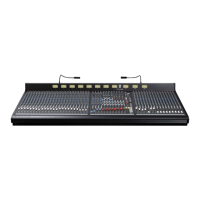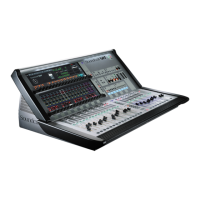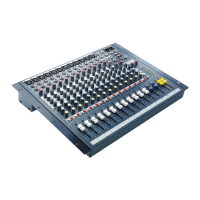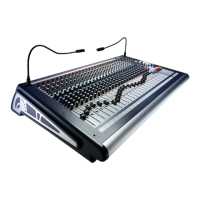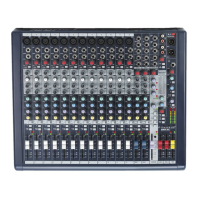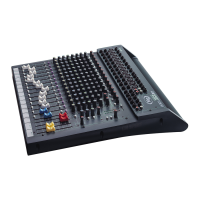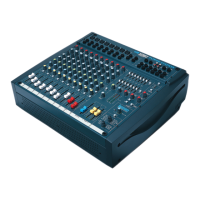Audio Wiring
Having provided all equipment with power and earthing connections, consideration
must be given to the method of providing audio interconnection and adequate
screening of those interconnections. This must be done in a logical sequence to avoid
problems and assist in the localisation of problem equipment.
• Connect the Monitor system to the console and check for any hum, buzz, or
RFI. Only when you are satisfied with the quietness of the console and the
monitor system should you proceed with the next step.
• Connect stereo tape recorders, echo and foldback sends one at a time,
checking and isolating any connection which degrades performance.
• Connect all other peripheral devices.
• Connect all microphone lines.
By following this sequence much time and future trouble will be saved, and the
result will be a quiet, stable system.
Shielding
Audio equipment is supplied with a variety of input and output configurations,
which must be taken into consideration when deciding where the screen connections
should be made. There are three sources of unwanted signal being impressed on the
screen, which are as follows:
• Extraneous electrostatic or electromagnetic fields.
• Noise and interference on the earth line.
• Capacitive coupling between the screen and signal wires.
To minimise the adverse affects of the unwanted coupling to the signal wires, it is
important that the screen is connected at one end only, i.e. the screen must not carry
any signal current. Any signal on the wires within the screen will be capacitively
coupled to the screen. This current will ultimately be returned to the source of the
signal, either directly, if the screen is connected at the signal source end, or indirectly
via the earthing system, if the signal is connected at the signal destination end. The
indirect connection will cause an increase in high frequency cross-talk, and should
be avoided wherever possible.
Therefore, in general, always connect the shield only at the signal source end. In
high RF areas, the screen can also be connected to earth via a 0.01µF capacitor. This
will present a short circuit at RF frequencies, thus lowering the effective shield
impedance to ground. However, at low audio frequencies the reactance of the
capacitor will be sufficiently high not to cause an earth loop problem.
Points to Remember
• In all cases, use good quality twin screened audio cable. Check for
instability at the output.
• Always connect both conductors at both ends, and ensure that the screen is
only connected at one end.
• Do not disconnect the mains earth from each piece of equipment. This is
needed to provide both safety and screen returns to the system star point.
• Equipment which has balanced inputs and outputs may need to be
electrically isolated from the equipment rack and/or other equipment, to
avoid earth loops.
2.6 December 1994 Installation

